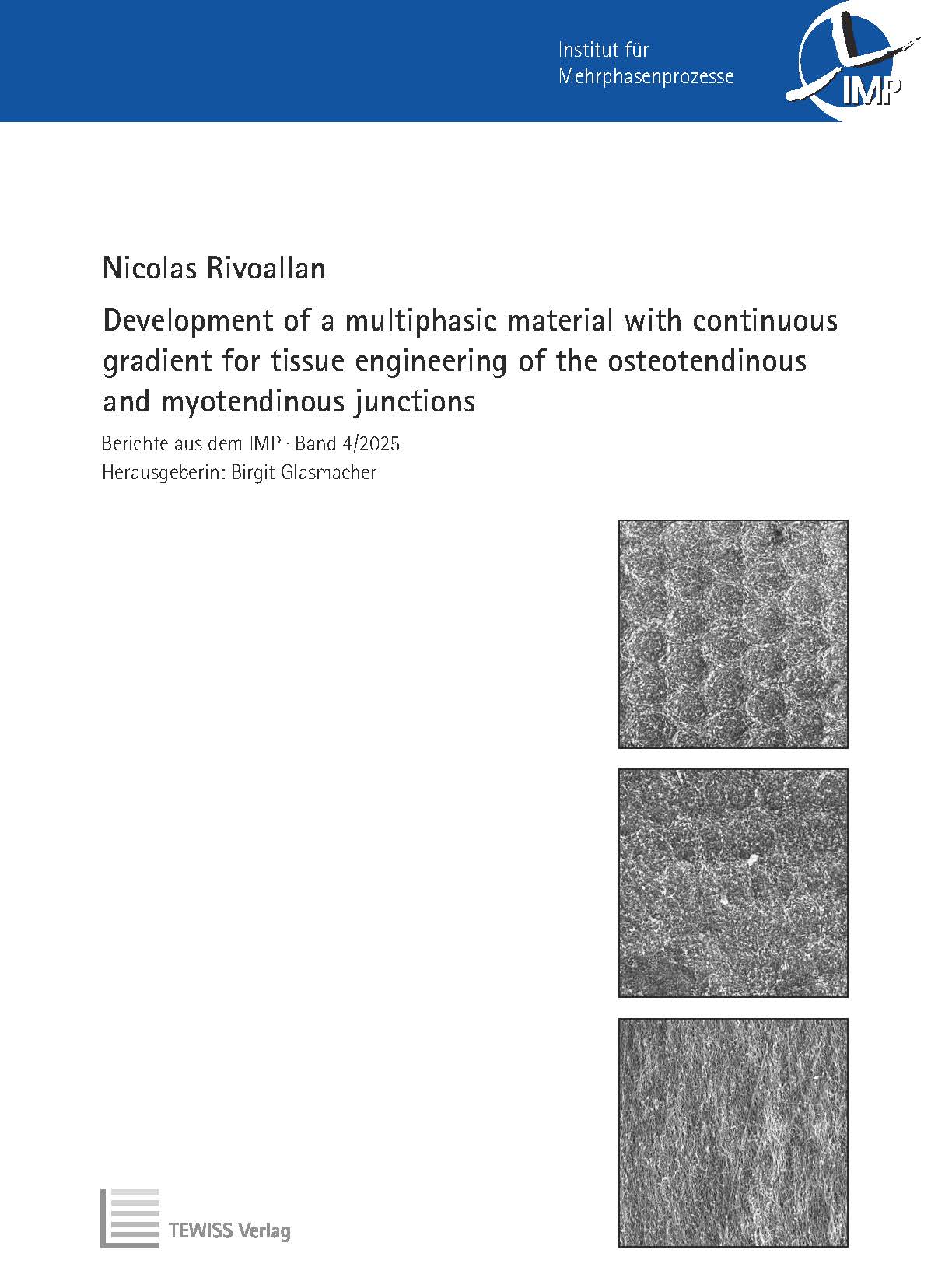Development of a multiphasic material with continuous gradient for tissue engineering of the osteotendinous and myotendinous junctions
Autor*in: Nicolas Rivoallan
ISBN: 978-3-69030-136-7
Dissertation, Leibniz Universität Hannover, 2025
Herausgeber*in der Reihe: Birgit Glasmacher
Band-Nr.: IMP 04/2025
Umfang: 266 Seiten, 114 Abbildungen
Schlagworte: Tissue engineering, musculoskeletal system, electrospinning, photolithography
Kurzfassung: Tendons link muscle to bone, enabling movement, but heal poorly. To improve repair, researchers are developing engineered grafts mimicking bone-tendon-muscle interfaces. Unique structures at entheses and myotendinous junctions can guide cell differentiation via topographical and mechanical cues. Honeycomb scaffolds induced bone-like differentiation, while aligned fibers promoted tendon fate. A gradient scaffold with three zones (bone, tendon, muscle) supported initial co-culture, though high-proliferation cell lines affected outcomes. Future work involves optimizing scaffold design and using primary or stem cells for full tissue integration.


